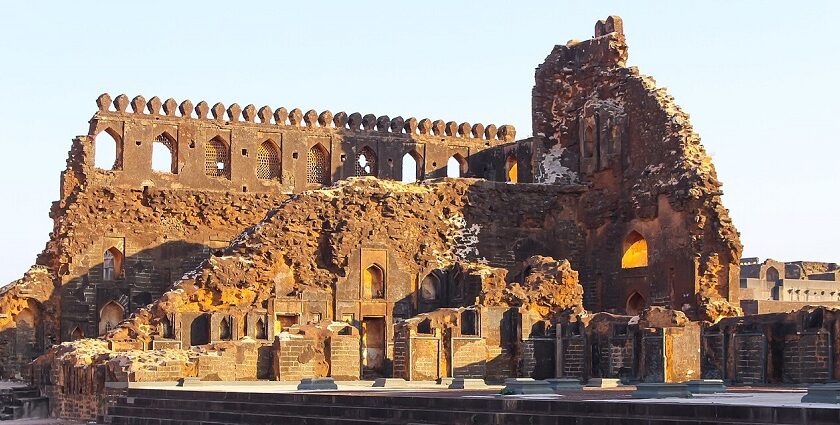Karnataka’s story is written in its forts. The forts in Karnataka rise from hills, stand along the coast, and even appear in the middle of towns. Some were built by the Chalukyas, others by the Bahmanis, and Tipu Sultan left his mark with sharp, star-shaped defences. The gates are heavy, the walls scarred, the moats still deep. From the ramparts, the wind hits hard, and the views stretch for miles. People come here for the climb, or for the stories of battles, or just to sit and look out. The forts in Karnataka don’t feel like ruins; they feel lived in, even now.
Top 10 Forts In Karnataka
The forts in Karnataka tell stories of rulers, battles, and changing styles of building. From high ridges to the coast, they hold the state’s history and still give wide views.
1. Chitradurga Fort
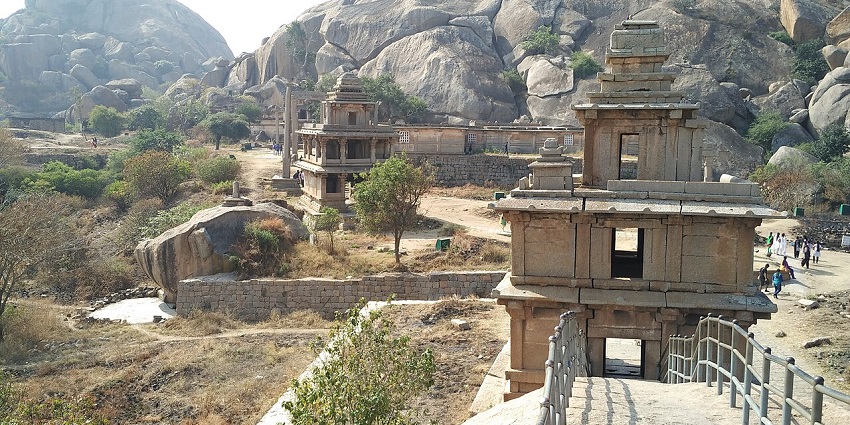
Photo: Gpkp / Wikimedia Commons
Chitradurga Fort, called “Yelu Suttina Kote” or the Fort of Seven Circles, stands as one of Karnataka’s best-known hill forts. Spread across rocky hills, it has seven rings of walls built with huge granite blocks that stretch across the slopes like a serpent. The fort includes 19 main gateways, 38 smaller entrances, 4 hidden passages, and hundreds of watchtowers, which made it almost impossible to capture at its height. Inside are old temples dedicated to Hidimbeshwara, Ekanatheshwari, and Sampige Siddeshwara, along with reservoirs that collect rainwater. One of the best-known stories here is that of Onake Obavva, who fought Hyder Ali’s men through a narrow cleft using nothing more than a pestle.
Highlights: Seven concentric walls, Onake Obavva’s watchtower, and ancient temples
Timings: 6 AM – 6 PM
Suggested Read: Places To Visit In Chitradurga
2. Bidar Fort
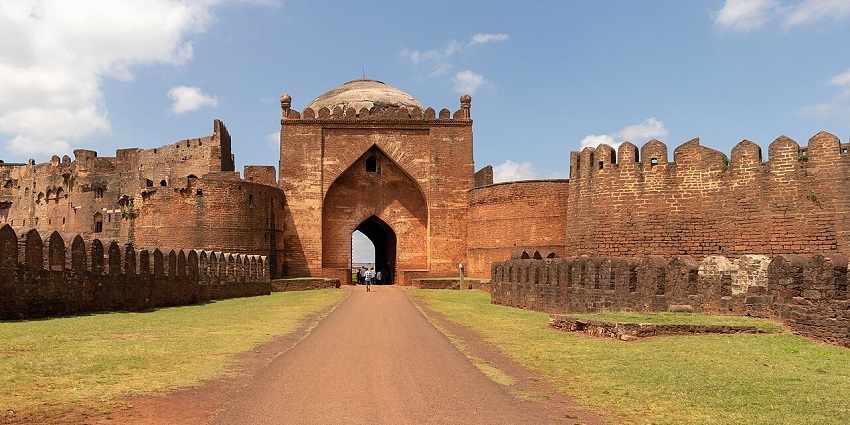
Photo: iMahesh / Wikimedia Commons
Bidar Fort, built in the 15th century by Sultan Ahmad Shah of the Bahmani line, stands as one of the best forts in Karnataka. It sits high on the Deccan plateau, ringed with three deep moats and heavy bastions that once kept enemies out. Inside the walls is the Rangin Mahal, its rooms lined with bright Persian tiles and carved wood that still look delicate against the rough stone. The Solah Khamba Mosque rises nearby, with 16 pillars holding up its vast roof, counted among the oldest mosques in the south. You can also walk through the Tarkash Mahal and Gagan Mahal, or head below ground into storage halls and old escape tunnels.
Highlights: Rangin Mahal, Solah Khamba Mosque, triple moats
Timings: 9 AM – 5 PM
3. Srirangapatna Fort
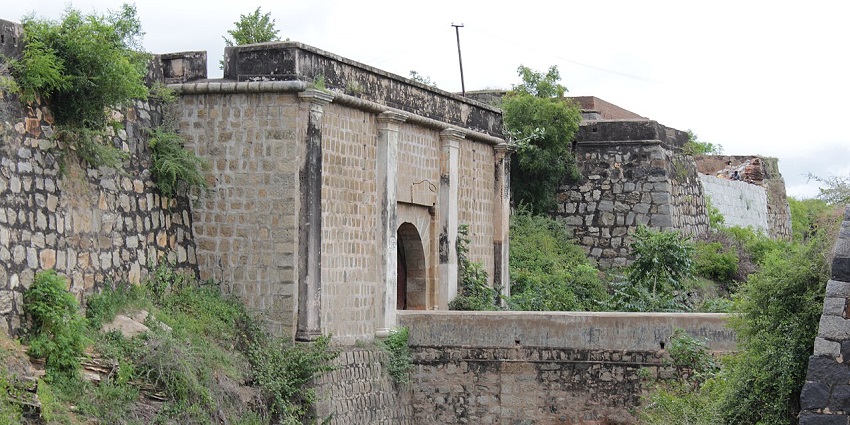
Photo: Chitra sivakumar / Wikimedia Commons
Srirangapatna Fort, standing on an island shaped by the Kaveri River, is one of the most strategically placed and historically important forts in southern India. First raised by the Vijayanagara rulers and later reinforced by Hyder Ali and Tipu Sultan, it became the centre of the Anglo-Mysore wars. The fort is listed among the popular forts in Karnataka because of its double walls, river-front defences, and striking gateways. Within its grounds are sites like Tipu’s dungeon, where captured British officers were held, and the Lal Mahal, which served as the royal palace. The Masjid-e-Ala, built in 1787, adds variety with its Persian texts and graceful minarets.
Highlights: Tipu’s Dungeon, Masjid-e-Ala, river-protected fortifications
Timings: 8:30 AM – 5:30 PM
Suggested Read: Places To Visit In Srirangapatna For A Scenic Getaway In Karnataka
4. Badami Fort
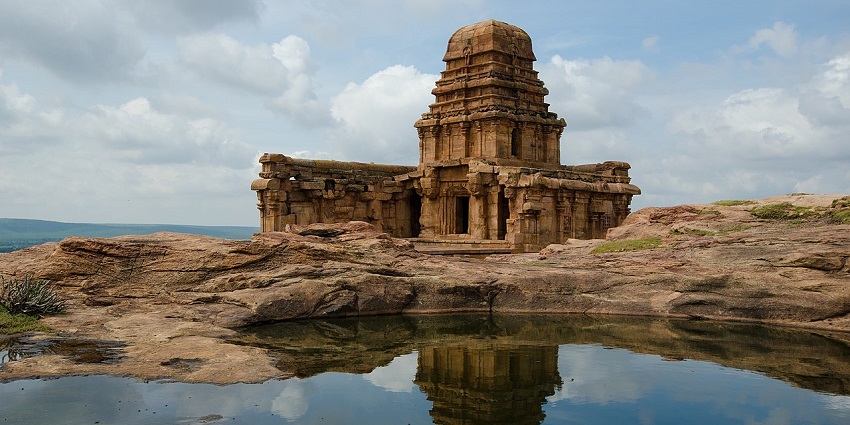
Photo: Ganesh Subramaniam / Wikimedia Commons
Badami Fort rises from rugged cliffs that look down on Agastya Lake. Built in the 6th century by the Chalukyas and expanded later, it still dominates the view of the cave temples across the hill. The walls climb the red sandstone slopes, almost blending into the rock itself, while the gateways carry a mix of early Dravidian forms and later Islamic touches. Within its walls stand shrines and watchtowers, along with inscriptions that hint at the history of the dynasty. The fort’s position on the high cliffs gave it natural protection, so invading armies found it difficult to break through. Among the ruins, you can still point out the treasury and the granaries that once supported the rulers
Highlights: Ancient Chalukya shrines, inscriptions, panoramic cliff views
Timings: 9 AM – 5:30 PM
5. Ballari Fort
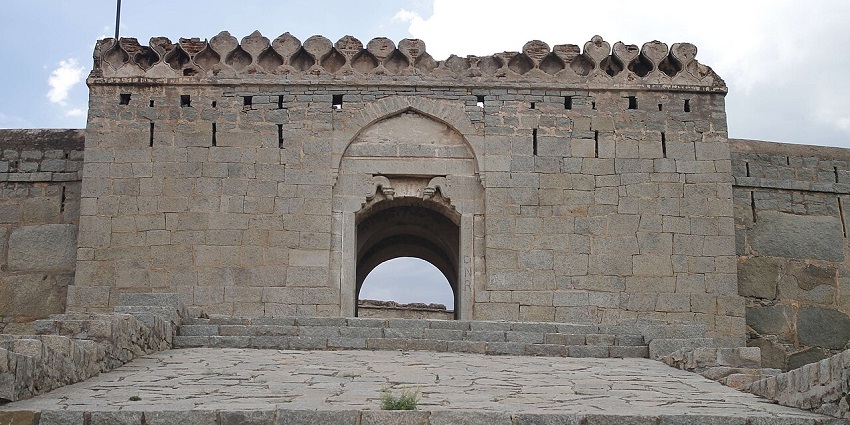
Photo: Vikashegde / Wikimedia Commons
On Ballari Gudda, the big granite hill, you’ll find Ballari Fort. It has long been known as one of the remarkable historical forts in Karnataka. First raised by the Vijayanagara rulers and later strengthened by Hyder Ali, the fort is laid out in two parts: the Upper Fort and the Lower Fort. The Upper Fort crowns the summit, reached by a tough climb, and still shows remains of ramparts, bastions, and water tanks cut from solid rock. The Lower Fort, closer to the base, holds ancient temples, a wide moat, and gateways shaped by both Hindu and Islamic traditions. From the hilltop, visitors can take in wide views of Ballari town and the plains beyond, with sunrise and sunset making the scene even more striking.
Highlights: Upper and Lower forts, temples, panoramic views
Timings: 8 AM – 6 PM
Suggested Read: Things To Do In Ballari For An Enchanting Karnataka Trip
6. Raichur Fort
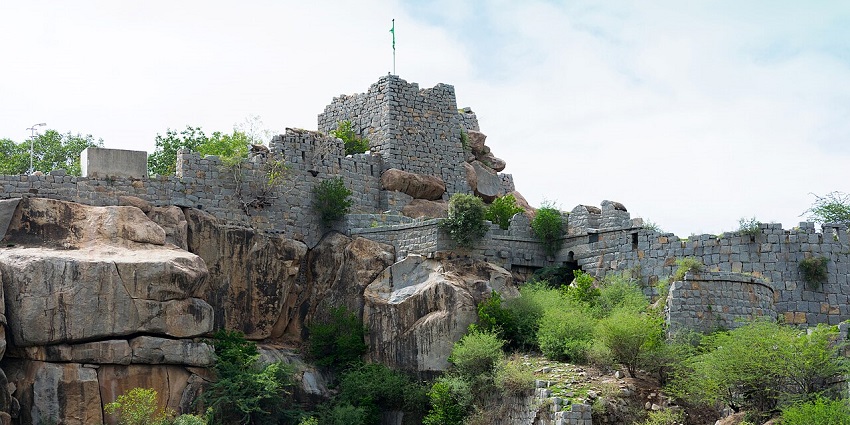
Photo: Madhu B M / Wikimedia Commons
Raichur Fort sits between the Krishna and Tungabhadra rivers, a position that made it worth fighting over for centuries. The Kakatiyas began it in the 13th century, and the Bahmanis and Vijayanagara rulers strengthened it later. The walls are built from big dressed stones fitted so tightly that no mortar was needed. There are double lines of defence, with gates like the Sailani Darwaza and Sikandari Darwaza, and bastions spaced along the way. Inside, you can still see old inscriptions, broken palace walls, and bits of water channels that once kept the fort alive. Among the top forts in Karnataka, it feels less like a monument and more like a survivor of history.
Highlights: Double walls, Sailani Darwaza, inscriptions
Timings: 9 AM – 5 PM
7. Kalaburagi Fort
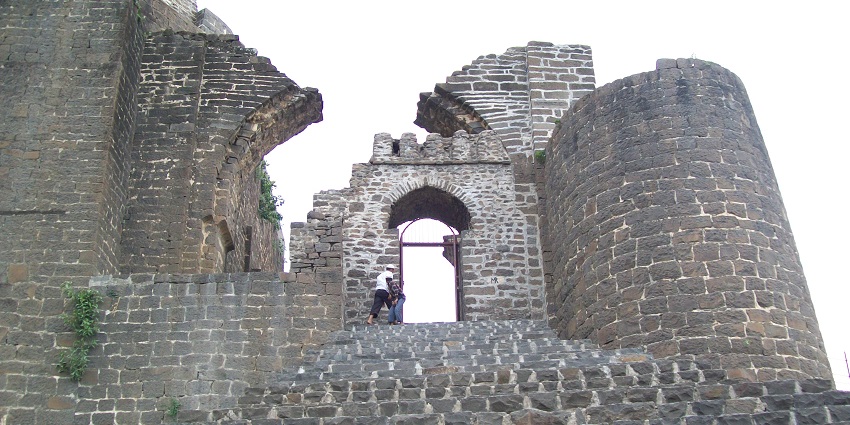
Photo: tuba art studio / Shutterstock
Kalaburagi Fort was first built by the Kakatiyas and later expanded by Alauddin Hasan Bahman Shah in the 14th century, making it one of the most famous forts in Karnataka. Its double walls and wide moat were meant to keep enemies out, and even now they look heavy and hard to break. At the centre stands the Jama Masjid, finished in 1367, its arches and domes often compared to the mosques of Spain. Around it are the remains of palaces, bastions, and wells that once supplied the people living inside. The granite and lime mortar walls have taken centuries of fighting, from Bahmani kings to Mughal armies, and still stand tall.
Highlights: Jama Masjid, bastions, double walls, moat
Timings: 9 AM – 5:30 PM
Suggested Read: Places To Visit Near Gulbarga For History And Nature
8. Manjarabad Fort
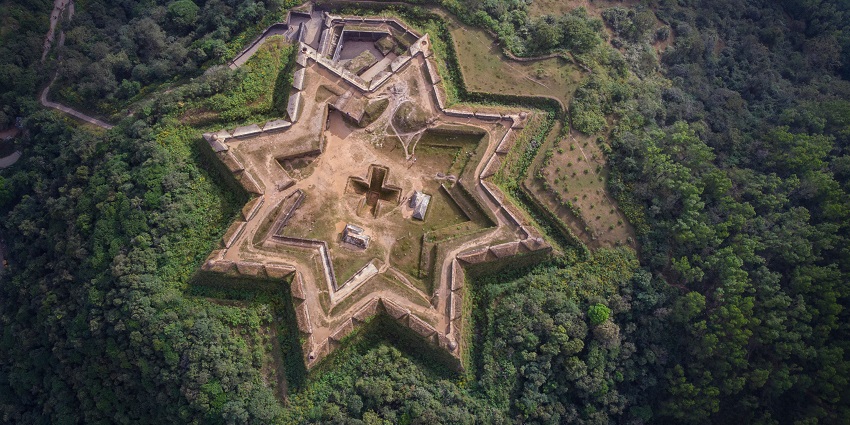
Photo: Nikhil Bangalore / Shutterstock
Manjarabad Fort, built by Tipu Sultan in 1792, is one of the most unusual hilltop defences among the many forts in Karnataka. Its star layout, with eight angled walls, shows European military planning adjusted to Indian conditions. Standing on the Western Ghats near Sakleshpur, the fort was placed to control the Shiradi Ghat route and to watch for British advances. Seen from above, it forms a near-perfect star, and its height gives wide views across the hills and valleys. Inside are large cellars once used for storing ammunition and tunnels made for movement during times of attack. Unlike other forts that held permanent settlements, Manjarabad was mainly a military post, a fact clear from its compact plan.
Highlights: Star-shaped design, panoramic views, Tipu Sultan’s stronghold
Timings: 8 AM – 5 PM
9. Mirjan Fort
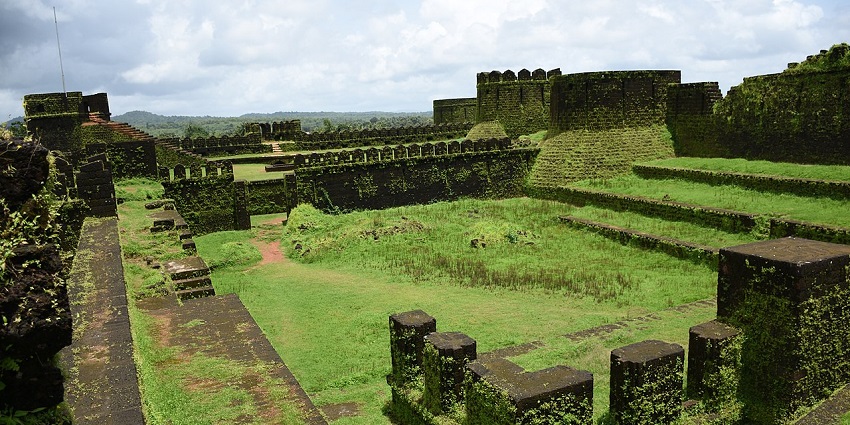
Photo: FarEnd2018 / Wikimedia Commons
Mirjan Fort lies near Kumta in Uttara Kannada, its laterite walls rising low and wide among palms and paddy fields. Queen Chennabhairadevi, remembered as the “Pepper Queen,” built it in the 16th century when the spice trade made this coast rich. The fort spreads over 10 acres, with high walls, bastions, and moats that once kept attackers out. Four gateways, each with broad stone steps, lead into courtyards where wells still hold water and dark cellars sink below ground. Old stories tell of secret passages now crumbling into the earth. The Portuguese came here, then the Marathas, then the British; their traces remain in the broken arches and scattered ruins.
Highlights: Laterite walls, moats, Pepper Queen’s legacy, coastal backdrop
Timings: 8 AM – 6 PM
Suggested Read: Things To Do In Karnataka
10. Madhugiri Fort
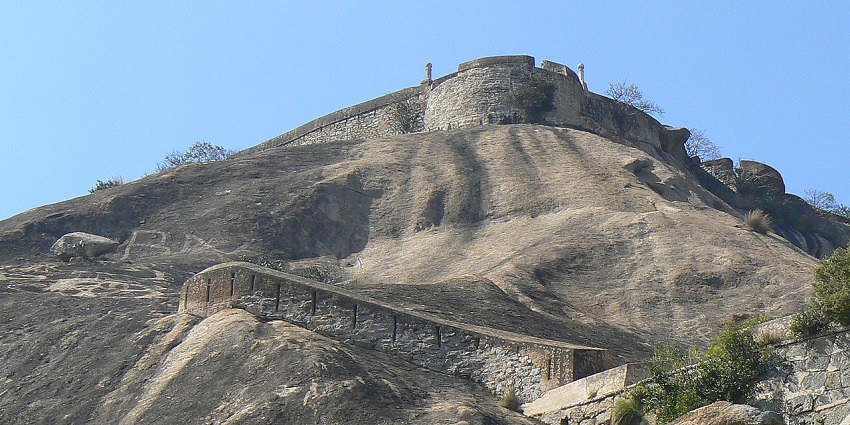
Photo: Saurabh Sharan / Wikimedia Commons
Madhugir, set on one of Asia’s largest monolithic hills, is among the most adventurous forts in Karnataka to visit. First raised by the Vijayanagara rulers and later reinforced by Hyder Ali, the fort towers above the town of Madhugiri. The climb is tough but worth it, as steep granite slopes are guarded by tiered walls, gateways, and bastions that wind to the top. On the way up, visitors pass water tanks cut into the rock, watch posts, and ruined halls that once held soldiers and officials. From the summit, wide views stretch across the plains, and the fort’s ringed defences can be seen marking the skyline.
Highlights: Steep monolithic climb, panoramic views, layered walls
Timings: 6 AM – 5 PM
The forts in Karnataka stand as timeless reminders of the state’s rich and varied history. From Manjarabad’s star-shaped beauty to Chitradurga’s mighty walls and Mirjan’s coastal charm, each fort tells a unique tale. Visiting them offers more than history—it’s about the climb, the views, and the silence of stone. Plan your journey with TripXL and let these ancient strongholds narrate stories etched in granite, beyond what guidebooks can offer.
Cover Photo: Udaym 1985 / Wikimedia Commons


 WhatsApp
WhatsApp
 Twitter
Twitter
